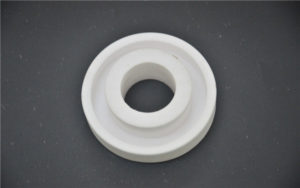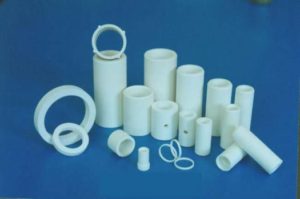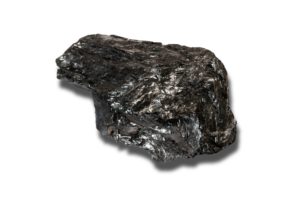- Alumina
- Boron Nitride
- Zirconia
- Other Ceramics
- Applications
- Contact
Aluminum oxide
Pottery is a porous and opaque ceramic variety. Unlike vitrified translucent porcelain, it requires glazing to make it waterproof to hold liquid. It’s not particularly hard, and not as dense as porcelain or clay, and it’s more likely to break. However, the advantage of clay is that it is not easy to deform in low-temperature baking, high stability in production and processing.
The sintering temperature is generally lower than 1200 degrees Celsius; Less deformation than porcelain during baking; Various processing techniques; The cost is low; It’s more fragile than porcelain.
The material is suitable for a wide range of applications, from large-scale sanitary ware to cup and saucer products.

Aluminum Oxide
Zirconia
Zirconia is another high-performance ceramic material. Zirconia is more widely used than alumina because its toughness makes it more resistant to cracking, and the smaller particles of which make the coating rounder and make it suitable for cutting tools, pistons, bearings and even ornate jewelry.
Superfine zirconia powder or titanium carbide powder can be used in the production of watches. The powder is pressed into shape, sintered at 1,450 degrees Celsius and polished with diamond sand to give it a shiny, metallic finish.
Excellent strength and fracture toughness; Super hard, super abrasion resistance; Excellent chemical stability; High-temperature resistance, up to 2400 degrees Celsius; Low thermal conductivity (20% of alumina).
After these China Special Ceramic Parts, Inc. were used in watches, their smooth surface and toughness made zirconia the perfect ceramic material for cutting props and kitchen knives. Zirconia is also used in automotive oxygen sensors for its excellent electrical conductivity. Other applications include medical biological applications and pump valves, pump mechanical seals.

Zirconia
Silicon nitride
Silicon nitride is one of the three hardest materials in the world. Its hardness is second only to diamond and hexagonal silicon nitride crystal. Silicon nitride was discovered in the 1960s by a group of engineers looking for materials that could withstand the harsh conditions inside jet engines.
Ceramics are very hard and have excellent wear resistance, loss, and compression properties, and silicon nitride is one of the most characteristic materials in ceramics. It is dark gray or black, with a mirror-like smooth surface. Science fiction writers in the 1950s dreamed of flying cups made of silicon nitride.
Silicon nitride is extremely compressive. The standard pressure it can withstand is 4 million pounds per square inch, roughly equivalent to 80 elephants standing on a cube of sugar or pulling 50 cars on a rope with a diameter of 1 inch. Besides, the surface of silicon nitride is extremely smooth. These properties of silicon nitride make it the most conventional material for bearings.
The friction of silicon nitride is 80% lower than that of steel; three times harder than steel; 60% lighter than steel; the operating temperature of silicon nitride is lower than that of steel.
Silicon nitride is commonly used in the shuttle’s main engines, military missiles, and gyroscopes. Silicon nitride’s super hardness makes it the main bearing material in products such as Marine fish reel, bicycle racing car, skating shoes and skateboard.
Silicon Nitride
Graphite
Graphite is not technically a ceramic, but its physical properties often make it a member of the ceramic family. Graphite has a wide range of uses. At a lower level, graphite is often used in everyday applications such as coins. On the other hand, graphite is often used in some high-end sporting goods. In these applications, graphite occupies a competitive market position in advanced sports equipment (such as tennis rackets and golf clubs) due to its good strength and humidity ratio and good energy absorption characteristics.
Graphite is iron gray, soft and greasy with metallic luster. Graphite is usually divided into three types: crystalline flake graphite, soft amorphous graphite, and the most commercially valuable synthetic graphite. Graphite’s layered structure gives it a smooth, distinctive feel and makes it an excellent lubricant at high temperatures.
Absorbable energy; Good strength to weight ratio; Small coefficient of friction; Non-toxic; Excellent machining performance; Good resistance to chemical corrosion; Good electrical conductivity; Stable at high temperature, high strength; Excellent thermal shock resistance.
Various forms of graphite are widely used in industrial fields. Graphite pencils are made of amorphous graphite mixed with clay. Graphite can be used in a variety of conformable materials to enhance plasticity, make products more flexible, promote energy absorption, enhance strength and hardness. Graphite’s ability to withstand high temperatures has led to its use in refracting telescopes, space shuttles and vehicles.

Natural Graphite
Boron nitride
Although boron nitride is used in small amounts in cosmetics, where only 3 to 10 percent boron is added, these ingredients stick to the skin and make it look softer and smoother.
Various grades of boron nitride are used in a wide variety of products. Like diamond and silicon nitride, cubic boron nitride crystals are one of the hardest materials in the world and are excellent for making cutting tools. Boron nitride is divided into two types. One is hexagonal boron nitride, which is similar to graphite and has high-temperature resistance. It is known for its smooth and fine properties. The other is cubic boron nitride, which has excellent hardness and is commonly used for cutting, grinding and drilling.
Silky smooth; Excellent adhesion; There are various levels of products, can be widely used in a large number of products; Inconvertibility; Good lubricity; Chemical inactivity; non-toxic.
High-purity boron nitride powder can be used in cosmetics such as foundation cream, lipstick, eyebrow pencil, etc. Its good lubrication characteristics make it in many raw materials and industrial production and processing of friction will be reduced to a minimum.
Please visit http://www.samaterials.com for more information.
I want to buy precision solid round pins D40mm in Si3N4.
Length about 75mm.
Please email me.
Regards
MARK WILKSCH
Hi Mark, you can send your inquiry to our sales team through our inquiry system. You can click the following link: https://www.speciaLceramicparts.com/inquiry/. Thanks for your understanding.